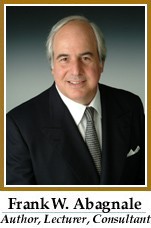If you say it long enough and loud enough, people will start to believe it. That’s the M.O. for the Peoria Park District (PPD) when commenting on the Kellar Branch issue. The Journal Star “report” in the paper today (“Railcorp, city reach deal on rail spur”) includes this little nugget from Bonnie Noble, executive director of the PPD:
“This is a win-win. The community will still have the advantage of having rail service and an expansion of rail service,” Noble said. “This community trail is for everyone who lives in this area as well as an economic attraction and development.”
Lie #1: “The community will have . . . an expansion of rail service.”
Truth: Right now, the Kellar Branch has access to eight railroads via neutral access with the Tazewell & Peoria Railroad (TZPR) line. Those eight railroads are: Burlington-Northern Santa Fe (BNSF), Canadian National (CN), Illinois & Midland, Iowa Interstate, Keokuk Junction, Norfolk Southern, TP&W and Union Pacific. If they take out the Kellar Branch between downtown and Pioneer Park and rely solely on the spur from the west, there will only be access to one rail line: Union Pacific (UP). That means competition is eliminated and tarriffs go up. No one can honestly say that reducing rail service from eight lines to one is an “expansion.”
Lie #2: “This community trail is . . . an economic attraction.”
Truth: The community trail will cost $4 million dollars in state and federal grants. That’s after a $900,000 state grant and $175,000 from the city were used to build the UP spur from the west. Where’s the business model that shows when this $5+ million project is going to break even? And from where is the revenue coming? Is the park district going to pay taxes on this land? Are people going to move to Peoria because we have a linear park? Are they going to charge admission? Are hotels and restaurants going to pop up along the trail? Are businesses going to move to Peoria because we have a trail? What, pray tell, is the “economic attraction” of which Noble speaks? There is none. And don’t give me the “quality of life” argument — it’s not like we have a dearth of parks in Peoria. This project isn’t going to significantly enhance Peorians’ access to greenspace. In contrast, what we’re giving up is the opportunity to attract manufacturing business to the Pioneer Park area — businesses that would bring jobs and revenue into the city. The cash-strapped city is also passing up the opportunity to make a quick $565,000 in cash by selling the line to Pioneer Railcorp and unload maintenance of the Kellar Branch altogether. And, incidentally, when was the last time a park district project made any money? If a project like the Riverplex which actually sells services can’t make money, what makes them think a park is going to be an “economic attraction”? This is a boondoggle.
Lie #3: “This is a win-win.”
Truth: Carver Lumber doesn’t currently use UP for its shipping — it uses CN and BNSF. That means that, in addition to losing direct access to its main shipping carriers, it’s going to have to start negotiating with UP to pick up its freight elsewhere, which will mean longer transit times and undoubtedly higher shipping cost. They may even resort to trucking, in which case the nice new rail spur will be abandoned. No win-win there. The city has payed money to build the spur and will probably be tapped for extra funds to build the trail if the grants fall short, when they could instead be making money by selling the rail line. No win-win there.
The question is, why doesn’t the Journal Star challenge these statements from the Peoria Park District? Where is the investigative journalism? It’s one thing for the Journal Star to support the conversion of the Kellar Branch line to a trail on their editorial page. But advocating it in their news reports is inappropriate. And it’s obvious that they’re advocating it. Check out the subhead on today’s story: “Move is a step in the right direction for long-awaited hiking, biking trail.” Who says this is “the right direction”? This gleeful statement does not even pretend to be unbiased. Or look at the headline from their July 7 story: “Delay puts trail at risk.” Why not, “Trail puts Pioneer Park business at risk”? Sound biased?
There’s a word for “journalism” like this: propaganda. The Journal Star is deliberately misleading the public through their reporting on the Kellar Branch issue because of their advocacy for the park district’s plans. Thus, they are engaging in propaganda, “information, esp. of a biased or misleading nature, used to promote or publicize a particular political cause or point of view” (Oxford American Dictionary). Now, I’m only talking about this one issue; overall, the Journal Star does a good job of covering the news. But on this issue, they are doing a great disservice to Peoria residents.

